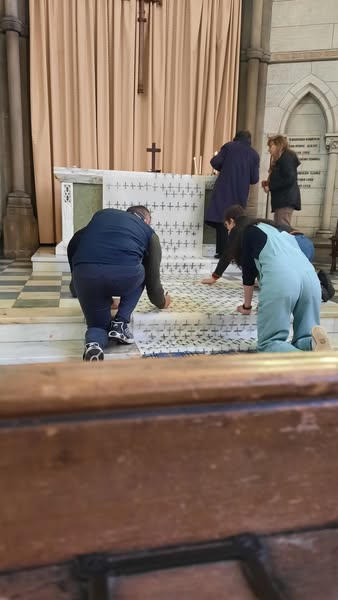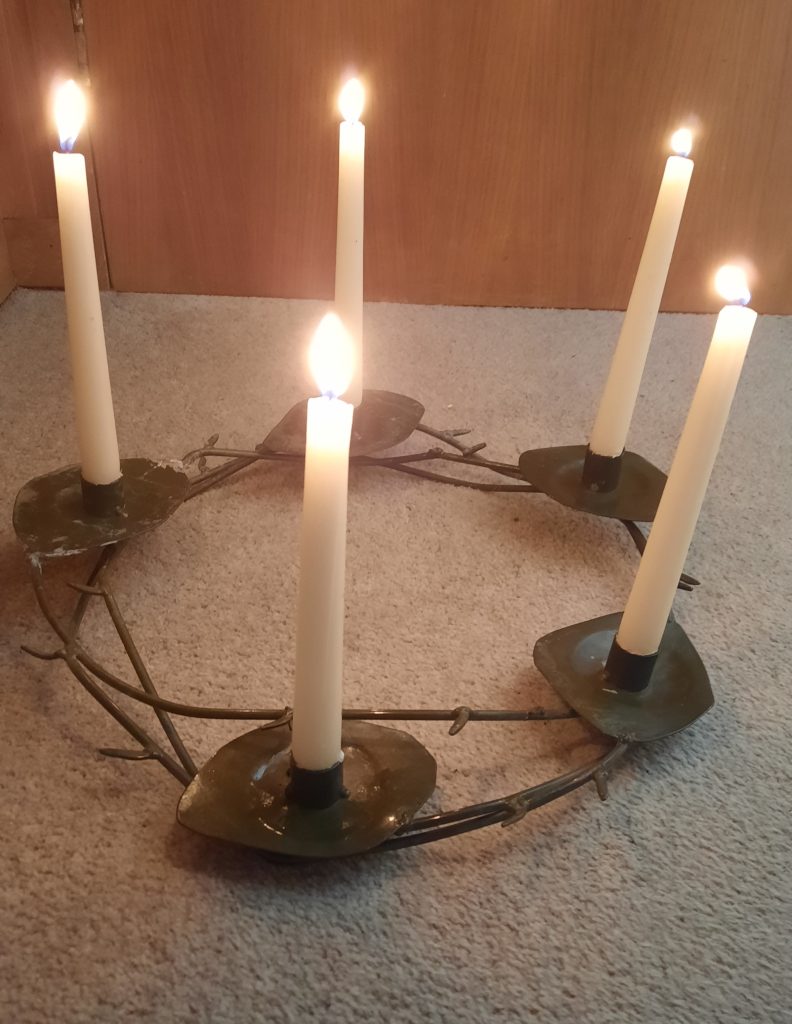We all have experiences we can never forget. Still, few of them are shared with so many others that they become part of the nation’s corporate memory.
COVID-19 was one of them, with lost relationships, lost education, lost employment, lost opportunities, lost health, and, for many, the loss of loved ones. So when Sunday, 9th March, was announced as this year’s National Day of Reflection, it was a no-brainer for us to organise our service around it. The fact that it was the first Sunday in Lent, just four days after we had daubed ourselves and the congregation with ash, added poignancy to the occasion.
Anticipating that some non-churchgoers would attend, we set out to craft a liturgy that would be appropriately serious while also being missional, drawing from our experience in working with fresh expressions of church over the last twenty years or more.
Three things were prominent in our thinking:
- If we expect people to sing, we need to offer easily accessible words and music to include those who are generally not singers and ensure that a clear lead is given from the front (especially important for us, with a building the size of a small cathedral). On this occasion, the government resources identified plenty of hymns that fit that brief, and we happily used a selection of those.
- Anything we say about the Bible needs to relate to the experiences of the people in our local context. The lectionary offered the temptations of Jesus as the gospel reading (Luke 4), and with John riffing off the many restrictions and losses of Covid as well as the isolations (“lockdowns”) we actively sought and prayed, asking “When does a retreat become a nightmare?” Later in the service, Olive followed this up by making connections with other episodes of national pain.
- If we are hoping for engagement and response, we need to make that physically tangible and not just something that might happen in people’s heads or in private. Olive introduced three minutes of total silence, then referred to some other Biblical times of trial and introduced a metal candelabra shaped like a crown of thorns made by inmates at Glenochil Prison in appreciation of her ministry there. It was thrust into her hands on the very day of the Dunblane school shootings in 1996, with the cryptic, but heartfelt hope that “if there’s anything to say, it must be here”.
We were also blessed to have an art installation that Peter & Heidi Gardner had created for us for Ash Wednesday, and this, together with the crown of thorns, became a focus for interactive prayer and engagement as people came forward to light candles, writing and drawing on the installation, naming aloud whatever/whoever they wished to remember and pray about, which they did spontaneously for almost 20 minutes!
The enthusiasm with which people engaged told us that God was touching lives in a significant way. However, we were still surprised when social media posts used words like “inspirational” and “mind-blowing”. More importantly, though, it reminded us of a soundbite we have frequently used in seminars, a traditional Chinese proverb often attributed to Confucius: “I hear – I forget, I see – I remember, I do – I understand”.
In a culture of visual stimulus and engagement where people are searching for the life-changing potential of doing and understanding, prioritising speaking and hearing will always struggle to make effective missional connections. On Covid Reflection Day at Kelvinside Hillhead Parish Church, we had a glimpse of the difference that “doing” can make to our experience of the divine.
Olive Fleming Drane & John Drane

